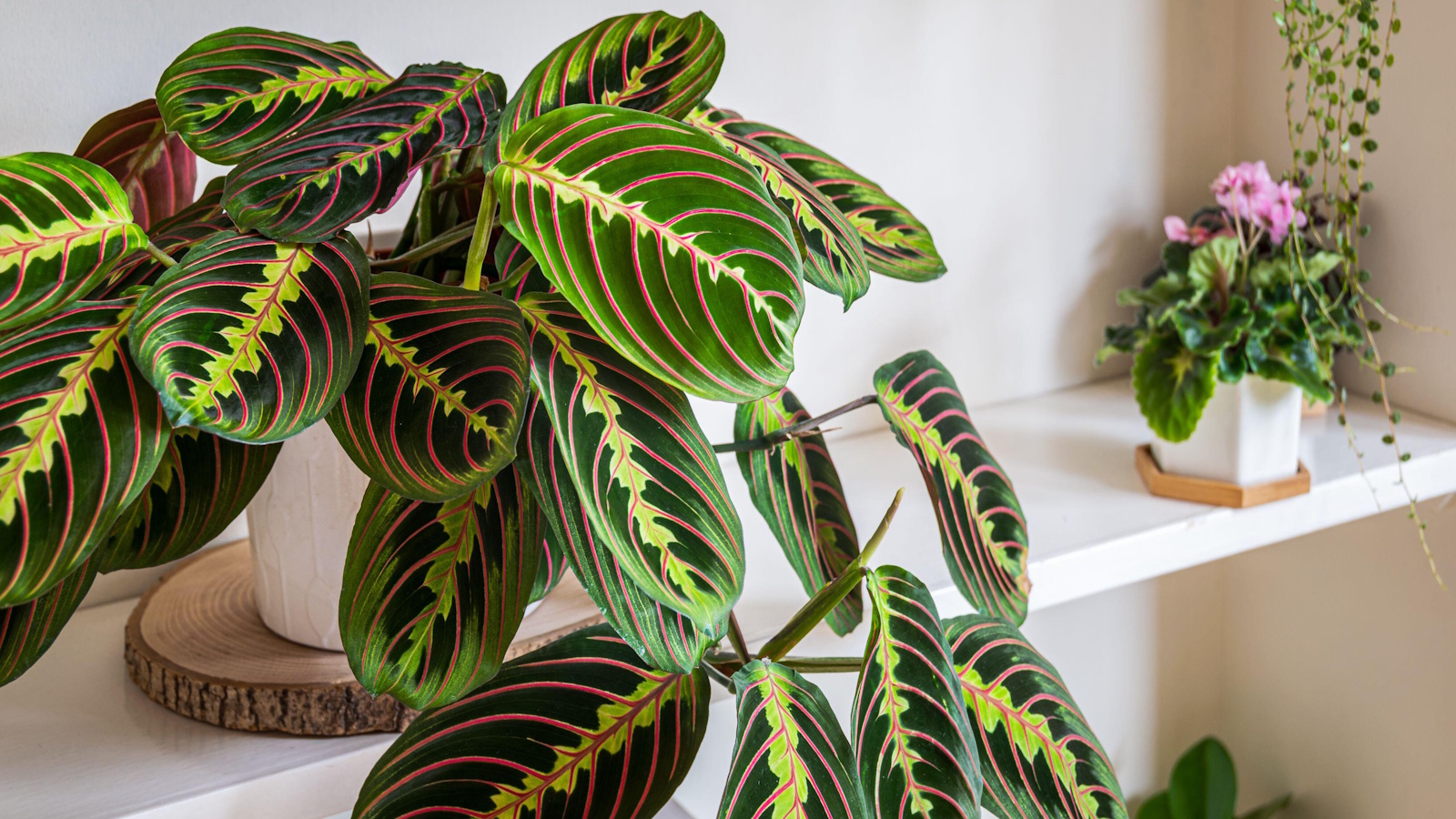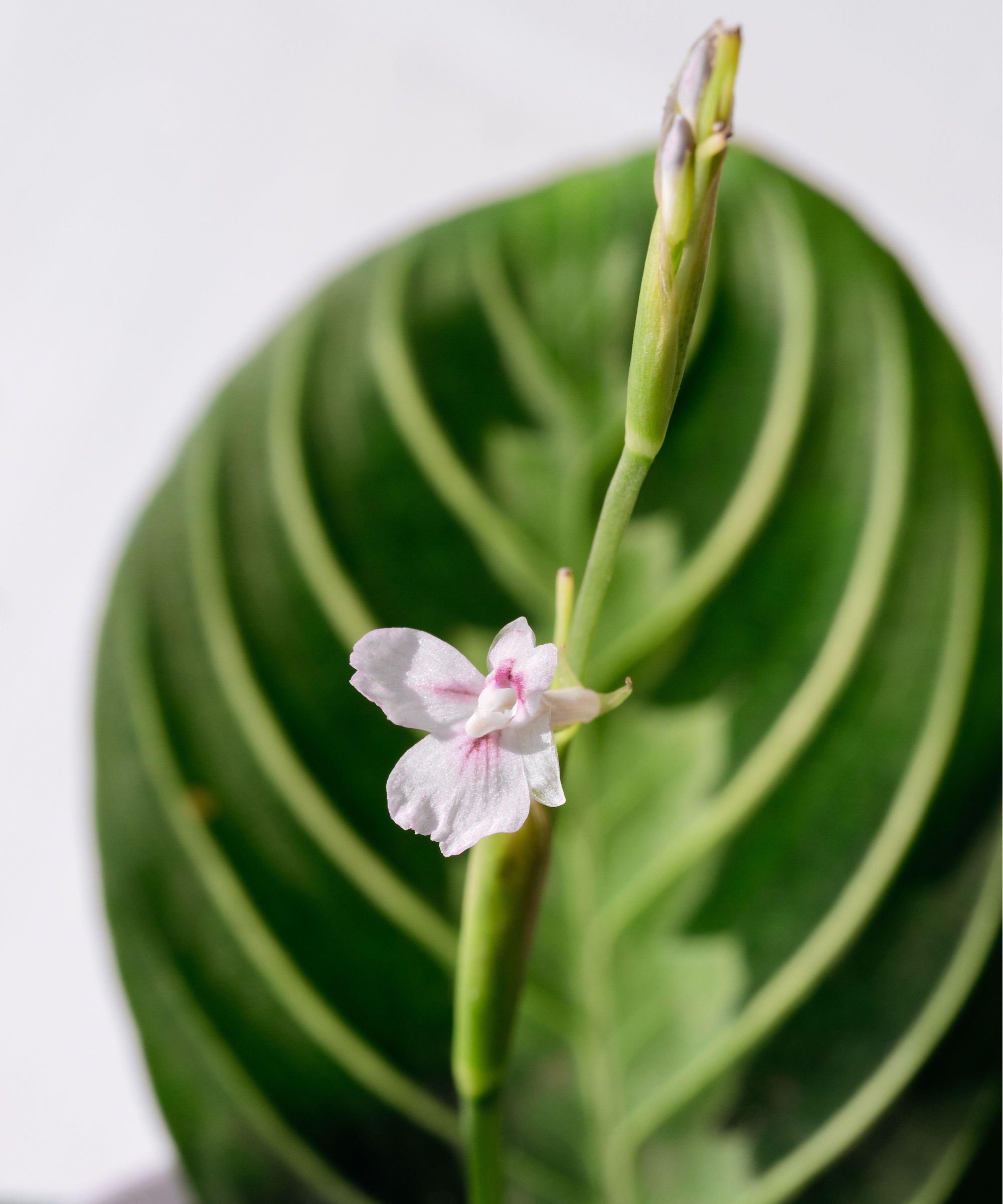
Prayer plants, or Maranta leuconeura, are some of the most unique houseplants to have in your collection. Not only do they boast striking variegated foliage that appears painted, they also move their leaves in and out with daylight, mimicking praying hands and earning their common name.
And their special qualities don't end there, as you may not realise prayer plants actually make the list of indoor flowering plants. However, while it's true prayer plants can flower, it isn't always so easy to get them to do so at home. It requires creating the right growing environment and providing the right care for prayer plants to flower.
Here, a horticulture expert reveals all about how and when prayer plants flower, so you can make some adjustments to your plant care regime and encourage blooms to appear.
Do prayer plants flower?

'Yes, all prayer plants will flower although it is not as common when grown indoors,' says horticulturalist Gail Pabst of the National Garden Bureau.
There are around 50 types of prayer plants with some popular varieties including the dark and pink 'Fascinator' and the chartreuse 'Lemon Lime.' As Gail mentions, all types have the ability to flower, and they often do in their native environment of Brazilian tropical rainforests.
'They flower in the spring after winter dormancy when they are starting new growth. They can flower continuously, into spring and summer,' says Gail.
Like other indoor plants that can flower all year round, you'll spot prayer plant flowers on slender flower spikes. They tend to be white, purple, or pink, and are gem-sized, similar to the flowers found on different types of spider plants.
The reason it's tricky to get a prayer plant to flower in a home environment is it's difficult to recreate the tropical environment it usually blooms in. However, Gail notes there are a few things you can do to encourage blooming.
'Rare as it is for them to bloom, prayer plants bloom when they are happy. They are happy when they are healthy and in ideal conditions.
'To encourage flowering, you need to maintain a consistent temperature between 65 - 75°F, a humid environment, and bright indirect light,' Gail explains.
You can use grow lights for houseplants to boost light levels if your home gets limited daylight (like this grow light from Amazon), and you can use methods to increase humidity for indoor plants, as well as increase warmth - like with this humidifier from Amazon and this heat mat from Amazon.
Alternatively, use indoor greenhouse ideas or consider moving your prayer plant into your greenhouse for the warmest season.
FAQs
Why is my prayer plant flowering but not growing new leaves?
If you've been able to get your prayer plant to flower, you may notice it has stopped producing so many new leaves. Horticulturalist Gail Pabst of the National Garden Bureau explains: 'Blooming diverts the plant energy from producing new leaves, so some remove the flowers to encourage increased foliage growth.' You can simply use essential pruning tools or sharp scissors (from Walmart) to cut off faded flower spikes. Provide optimal prayer plant care going forward to encourage leafy growth.
Will fertilizer encourage a prayer plant to flower?
The best fertilizer for houseplants are the ones that support the overall health of a plant. For blooming plants, this includes plant food that supports flower development. This means that you can fertilize your prayer plant in its active growth season to encourage blooming. You should aim to use a phosphorus-rich fertilizer for bloom boosting, like this blooming houseplant food from Amazon.
There are also a few things that can prevent your prayer plant flowering, such as overwatering. If your prayer plant's leaves are curling, it's a sign something is wrong in its growing environment, impacting its ability to bloom. Try making adjustments accordingly to encourage flowering.







